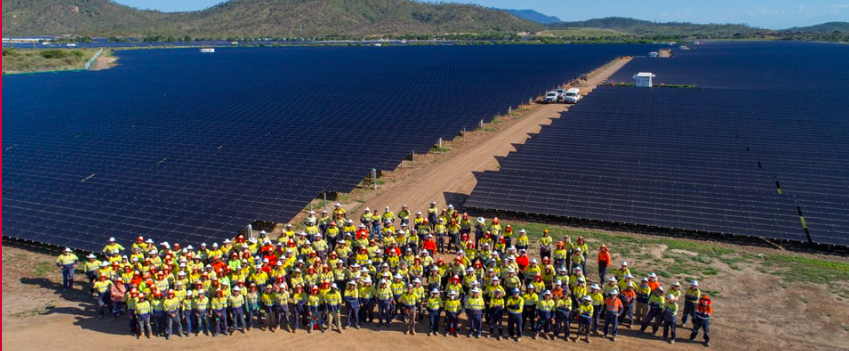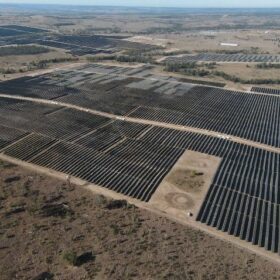The Australian Energy Market Operator (AEMO) has formally declared a system strength gap in parts of the North Queensland grid after the issue had prevented several renewable energy generators to export their full capacity. The shortfall applies to the 275kV node at the Ross substation where three wind and solar projects could see their output curtailed to zero.
Following the formal declaration, transmission network service provider Powerlink is due to ensure the fault is addressed. AEMO has also set a deadline of 31 August 2021 for Powerlink to “ensure that the necessary system strength services to address the fault level shortfall are available.”
AEMO had previously declared system strength shortfalls in South Australia, Tasmania, and Victoria. Most recently, a gap was declared in the West Murray region of Victoria and New South Wales, where five solar farms have had their output curtailed by 50% for the past seven months. However, it appears that the West Murray saga will soon come to an end and the affected generators will be allowed to resume normal operations following a successful inverter re-tuning process carried out by German manufacturer SMA.
Last month, AEMO issued a warning that two solar and one wind farm could see their output significantly curtailed due to system strength issues in northern Queensland. The market operator said the output of the Haughton and Sun Metals solar farms and the Mt Emerald wind farm could even be slashed to zero under certain conditions. The curtailment decisions was explained by a risk of oscillations which could be caused by inverter-connected generation under certain scenarios, such as lightning strikes or bushfires.
The Sun Metals project is a 125 MW solar farm located nearby a namesake Korean-owned zinc refinery. The project was commissioned two years ago and today covers one-third of the refinery’s energy needs. The other two projects are somewhat younger. Pacific Hydro Australia’s 100 MW Haughton Solar Farm connected to the grid in May, while RATCH-Australia’s Mt Emerald wind farm officially opened in August last year.
As announced by AEMO last month, the limitations on the output of these generators will be closely connected to the operation of other nearby generators. Namely, the three projects will be allowed to operate at full capacity only if Barron Gorge and Kareeya are running all their hydro plant units while being backed by the Gladstone, Stanwell, and Callide coal-fired generators. If one or more hydro plant units are offline, the output could be limited to 80 or 70%. In the worst-case scenario, the three generators will be forced to slash their output to zero.
Declaring the system strength gap is a step towards alleviating the problem, according to Clean Energy Council Chief Executive, Kane Thornton. “These renewable generators have been constrained through no fault of their own. As a result, the commercial returns of these projects are seriously impacted,” Thorton said. “It is critical that this issue is addressed quickly to ensure they can generate at full capacity to bring more low-cost generation to market.”
The situation could potentially be improved by the installation of synchronous condensers that could prop up system strength but would translate into additional expenses for the project owners. Therefore, the intervention of the electricity market operator and transmission providers is critical.
“While renewable resources, particularly solar, have a strong future in North Queensland, these types of uncertainties render planning and investment in the region harder and less likely. Addressing system strength is vital to ensuring North Queensland remains an attractive location for future renewable energy generation,” Thorton said.
This content is protected by copyright and may not be reused. If you want to cooperate with us and would like to reuse some of our content, please contact: editors@pv-magazine.com.








By submitting this form you agree to pv magazine using your data for the purposes of publishing your comment.
Your personal data will only be disclosed or otherwise transmitted to third parties for the purposes of spam filtering or if this is necessary for technical maintenance of the website. Any other transfer to third parties will not take place unless this is justified on the basis of applicable data protection regulations or if pv magazine is legally obliged to do so.
You may revoke this consent at any time with effect for the future, in which case your personal data will be deleted immediately. Otherwise, your data will be deleted if pv magazine has processed your request or the purpose of data storage is fulfilled.
Further information on data privacy can be found in our Data Protection Policy.